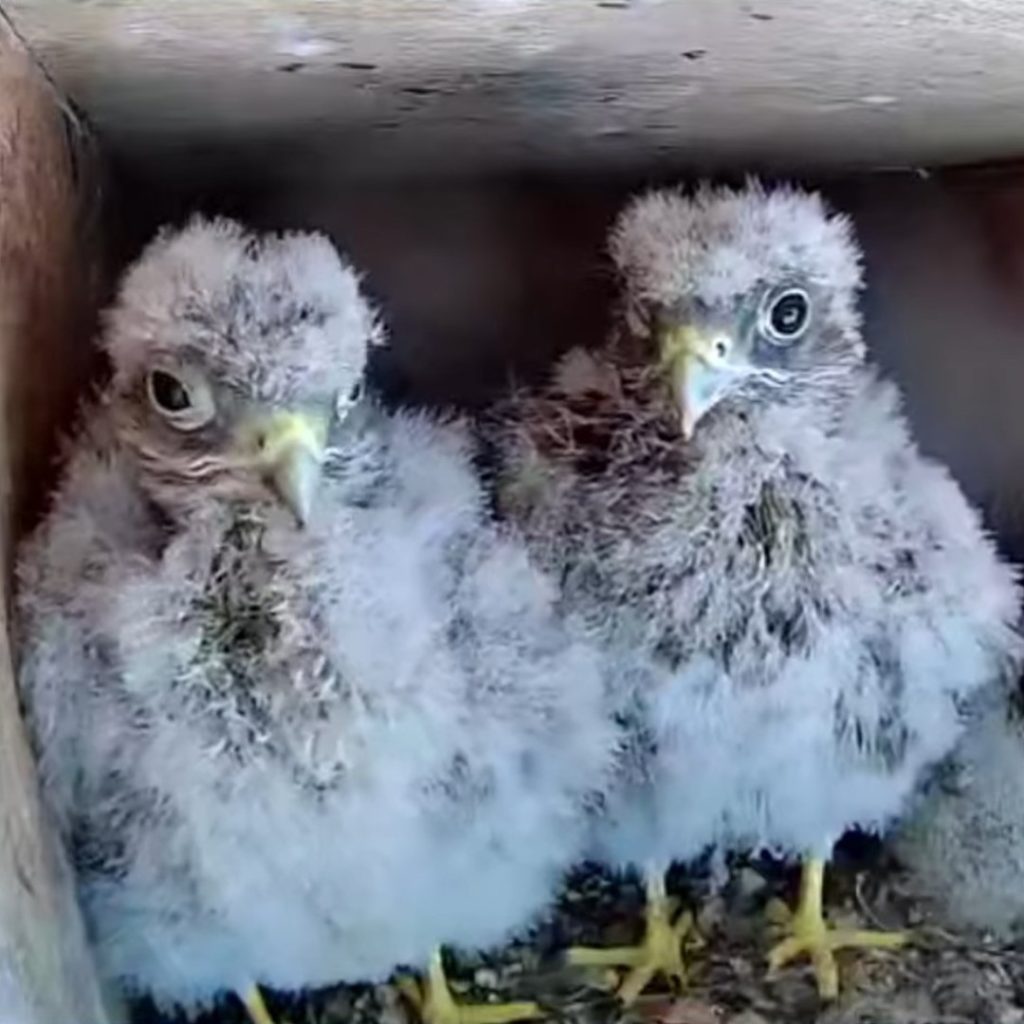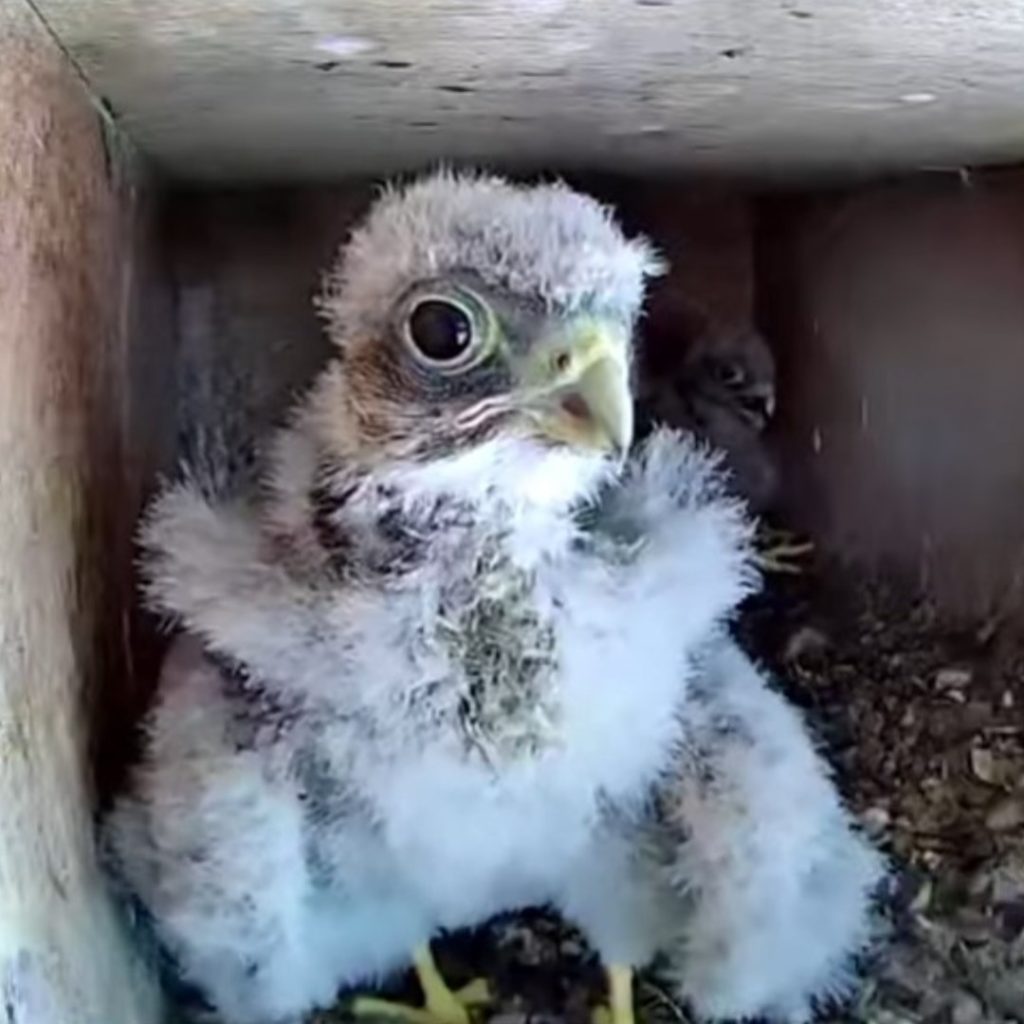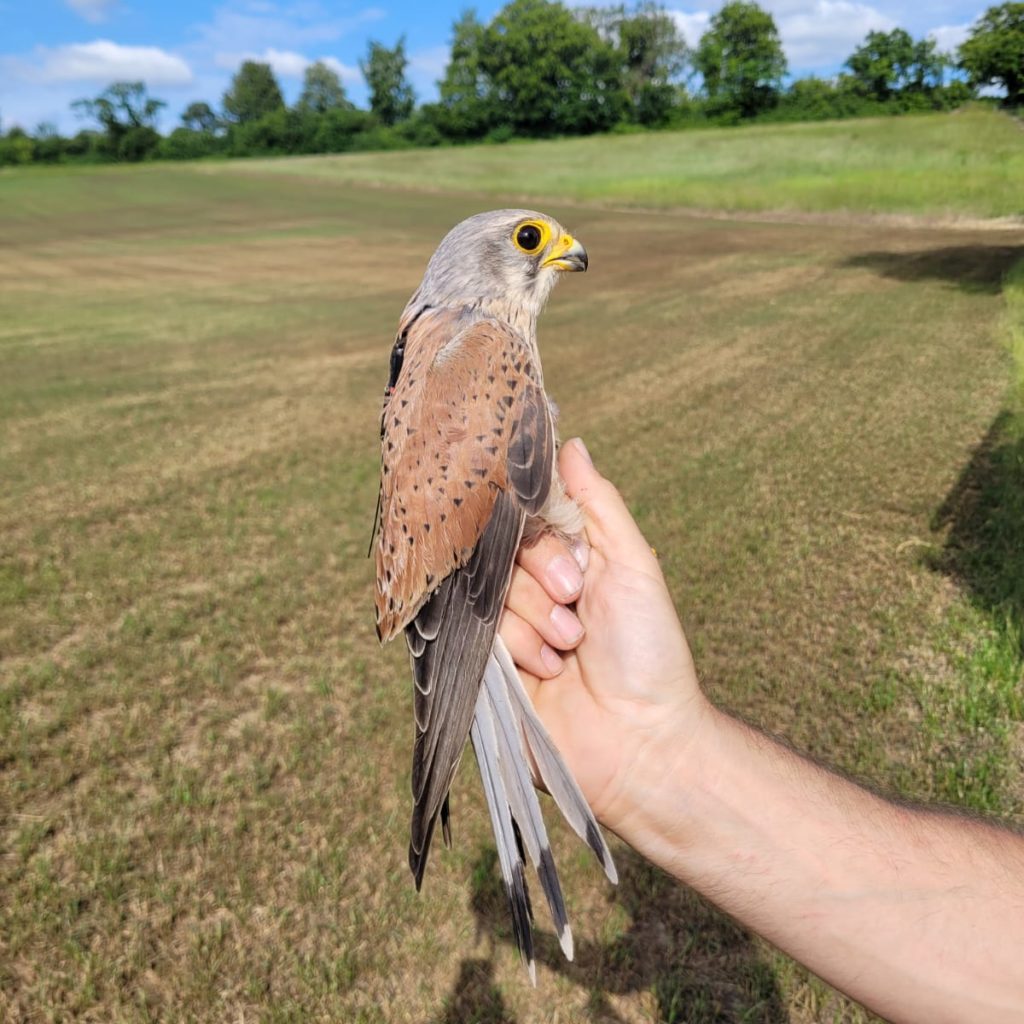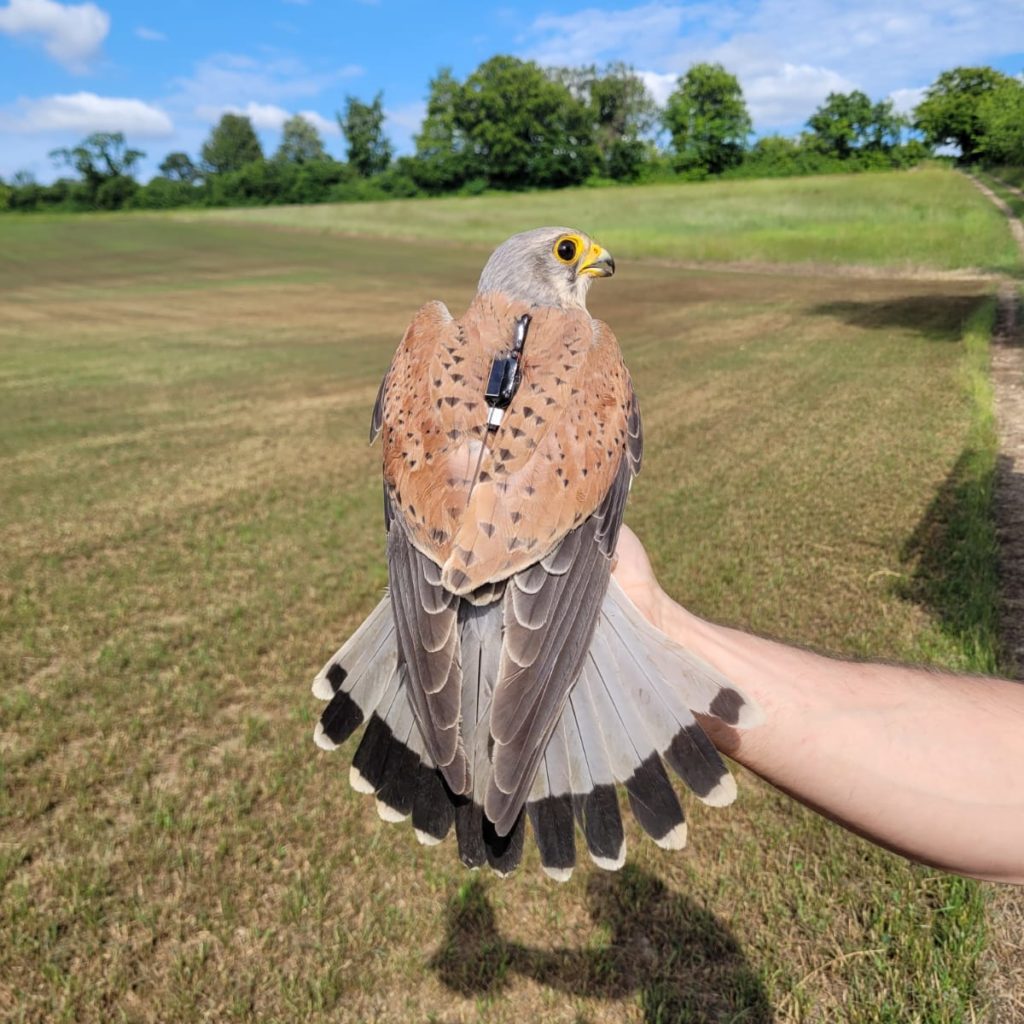
This year, for the very first time, we have had a live stream into one of the Kestrel nest boxes, which is part of our Raptor Nest Box Project. We have run this project since 2008, growing from an initial 38 boxes to around 1600 now! We have boxes for Barn Owls, Tawny Owls, Little Owls and Kestrels.
There is a unique kind of joy that comes from watching a live camera positioned on a nest, like you have been the only person invited to look into a normally hidden world that no one else can see. Watching new life unfold in front of you feels incredibly special.


From the first glimpses of the chocolate brown mottled eggs to the thrilling hatching of chicks, our Kestrel Camera truly provided a rollercoaster of emotions! The stage was set for nature’s drama to play out as it deemed fit. Many (addicted) viewers were able to watch the tireless dedication of the adult Kestrels, hunting and delivering food, along with the fragile and sometimes jeopardous balance of survival for the chicks as they grew and jostled for their share of the spoils their parents brought to the box. It is a privilege fostering both awe and empathy for these stunning and charismatic birds, once a common sighting across the UK landscape.
Beyond the mere fascination and intrigue of such insight, these live feeds can be a powerful tool for education and engaging people in conservation efforts. They can enlighten us on ecology and behaviour in real time, igniting curiosity into these birds, their conservation, habitat needs, feeding habits and so much more.
At the forefront of this, for us, is the crucial importance of providing and enhancing nesting habitats, not just for Kestrels, but for a host of British cavity-nesting birds of prey, whose populations depend on having nesting opportunities in suitable habitats to ensure they can thrive. In the UK, natural nest sites have become increasingly scarce. Each nest box provides opportunity for shelter, sanctuary and nesting, while a camera on these helps connects people to the urgent need for stewardship of these remarkable birds and the landscapes they inhabit.
This year has been a tough one for the cavity nesters in the RNBP. Only three successful Tawny Owl nests were recorded by our British Projects Manager, Dr Matt Stevens, while many Kestrel nests have struggled too. This is in sharp contrast to last year and is the worst year we have registered since 2013. While there is still time in the Barn Owl nesting season, box checks so far suggest it will also be a quiet year for them too.
A lack of prey is the most likely reason for how things have gone this year. The small mammal surveying that we carry out every year across several local sites has produced very few captures so far, with many days seeing no small mammals. This is a striking difference from last year, where some single days were in double figures for captures! The high breeding success of raptors last year, combined with a wet winter followed by a dry spring and summer, has likely contributed to the current scarcity of small mammals and in particular, Short-tailed Voles, a favoured food for Kestrels and Barn Owls in particular. The abundance of predators last year all eating Short-tailed Voles and the unfavourable weather conditions have likely combined to prevent the vole populations from recovering sufficiently. Where Kestrels will diversify their diet more, showing their adaptability, Barn Owls are much less adaptable and so we anticipate very few of our approximately 900 Barn Owl boxes being used for breeding this year.
Such a hard year across these species underlines the importance of the work we do and makes the tracking data we are after from adult nesting Kestrels even more valuable and interesting. Unfortunately, at the same time, it has also made it much harder to find enough successful and appropriate nest boxes to safely catch and attach trackers to as many birds as we would like. Nonetheless we are underway, with three Kestrels now wearing backpack trackers, two females and one male, which is a very positive start to take from the situation and will provide vital data for us to use to help us try and arrest the decline of these iconic birds.


Despite the challenges, the moments captured on our Kestrel Camera this breeding season have been a beacon of joy and inspiration, reminding us of why this work matters. In a tough year, this one nest has sparked joy, learning, and renewed motivation to keep pushing forward our work for these birds that mean so much to us and many others across the UK!
If you’ve been inspired by our young Kestrels this year, you can help us conserve them. This year, we are aiming to raise £60,000 to expand our work with Kestrels. This work includes looking after their nest boxes and fitting the adults with trackers to learn more about their behaviour. We are bowled over that you have given us nearly £30,000 already and are so thankful for this support. Head to our fundraising page to continue supporting these beautiful birds, and our work to stop their decline.